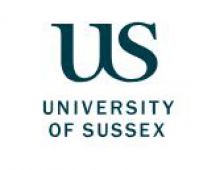Great efforts have been made in recent years by many UK universities to widen participation in their programmes. But as a researcher on inequalities in higher education who has supported outreach and widening participation work for more than a decade, I have always felt that the Gypsy, Roma and Traveller (GRT) community remains neglected by the sector.
Data indicate that only about 200 GRT people go to university in the UK each year. Yet such figures are far from authoritative – and this uncertainty itself highlights a major issue. GRT community members report horrifying experiences of being open about their ethnicity in education settings, and interviews we are conducting as part of ongoing research at the University of Sussex reveal that some avoid mentioning their GRT background at university, in part because of concerns about how they will be treated.
To be clear, there is already good work being done. Buckinghamshire New University has recently created a Gypsy, Traveller, Roma, Showman and Boater (GTRSB) pledge, which asks universities to make a firm commitment to support such students into and within higher education. King’s College London has the admirable Rom Belong scheme, which gives priority to GRT applications in its widening participation initiatives and also includes a lecture series highlighting the achievements of GRT academics.
At Sussex, my colleagues and I always try to collaborate with community groups, schools and colleges. We have built up a close relationship, for example, with the Brighton-based charity Friends, Families and Travellers so we can better understand the needs and experiences of our local GRT community. And we recently launched bespoke training for people working in outreach roles in other universities about the best ways of engaging.
But all this work is fragmented and piecemeal. It is too often a passion project for a few individuals with links to the GRT community. There is not a lot of policy encouragement from above. This needs to change if there are to be significant sector-wide improvements.
The Office for Students mandates access and participation plans to incentivise universities to work with under-represented groups. But while GRT are a “national target”, universities are not mandated to meet this particular “ethnicity gap”. And since universities are increasingly run on business lines, widening participation teams devote little, if any, effort to projects that do not work towards specific mandated targets.
Universities need a targeted approach to reach out effectively to the GRT community, while recognising its diverse and nuanced needs. In our work in Sussex schools, we heard from GRT young people who said they felt comfortable going down “culturally familiar” paths, such as working in trades or with animals. But others aspired to do very different things, including going to university. It is, therefore, crucial to strike a balance between respecting GRT traditions and keeping ambitious options open.
In work with marginalised communities, the value of recognisable role models is often highlighted. The downside is when such role models are expected to be exemplary students or express constant gratitude for the “gift” of inclusion. Furthermore, since members of the GRT community may have experienced racism and misrecognition within higher education, accounts of their experiences may be painful as well as inspirational. (One GRT graduate shared with us a story of his lecturer and fellow students laughing together at the burning of a gypsy caravan as part of a local bonfire celebration.)
If we are to give GRT students an opportunity to tell their stories, we need to take them seriously, and that includes reforming our own pedagogies and practices. We need to ask ourselves whether we give enough space on our curricula to exploring GRT culture, history and knowledge. We also need to reach out to and showcase the GRT community on campus – whether they are students, faculty or working in professional services.
It is important to respect some individuals’ unwillingness to divulging their GRT heritage because of justifiable concerns about how others might respond. Yet universities can play an important role by giving students positive reasons to identify with their GRT roots. This can be done by celebrating the achievements of the GRT community or offering targeted scholarships or contextualised admissions that support the attendance of GRT students in the first place.
There are many reasons why GRT children struggle to stay in mainstream schooling. These include racism and alienation from a curriculum that fails to recognise GRT culture, as well as some families’ desire to travel or take children out of school at the early secondary stage.
Universities can help by working with schools to show GRT pupils that they can continue in education far beyond GCSEs. They should also use their resources to support schools in developing inclusive curricula. A key aspect of the work we are doing in Sussex now is providing resources to local schools and colleges enabling them to engage in ongoing learning about the GRT community and so foster a sense that “school” is a positive place to be.
The same goes for university. Boosting GRT representation at university obviously requires targeted outreach in supporting them to apply. Equally important, however, is ensuring that higher education is a place of possibility that is fully inclusive for them once they get there.
Emily Danvers is lecturer in higher education at the University of Sussex.
Register to continue
Why register?
- Registration is free and only takes a moment
- Once registered, you can read 3 articles a month
- Sign up for our newsletter
Subscribe
Or subscribe for unlimited access to:
- Unlimited access to news, views, insights & reviews
- Digital editions
- Digital access to THE’s university and college rankings analysis
Already registered or a current subscriber?









